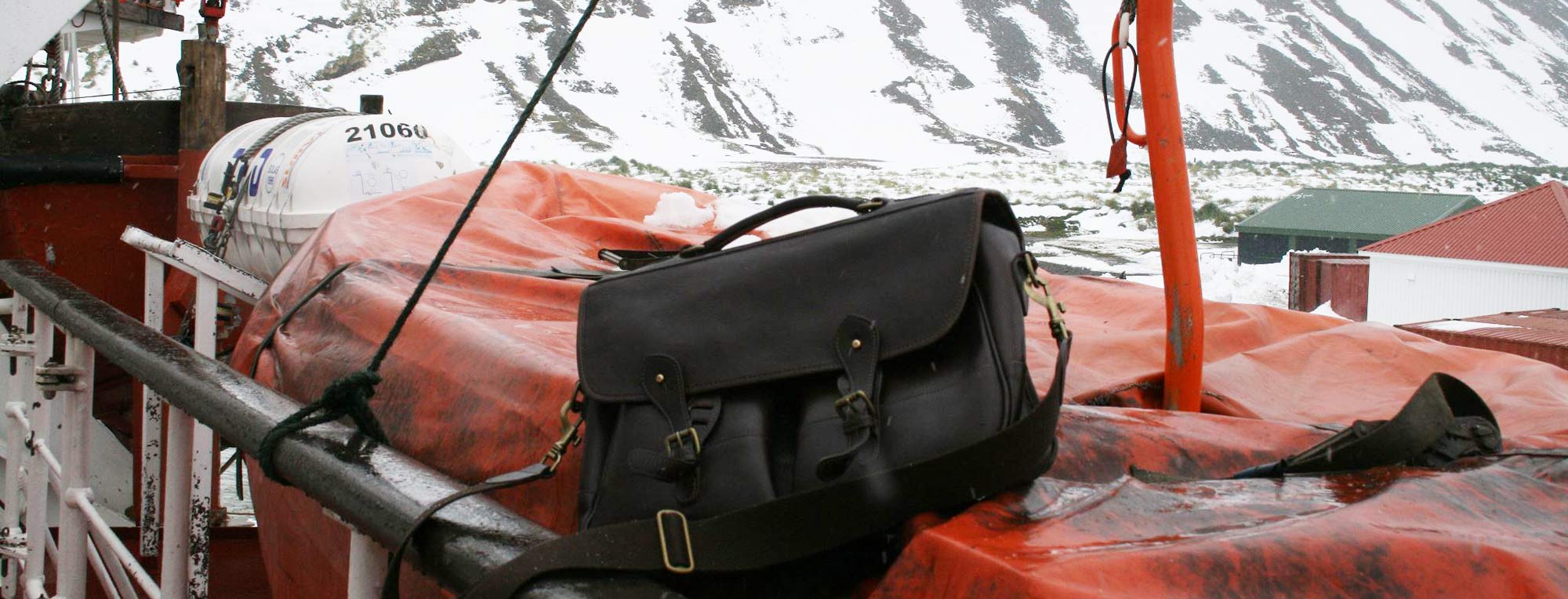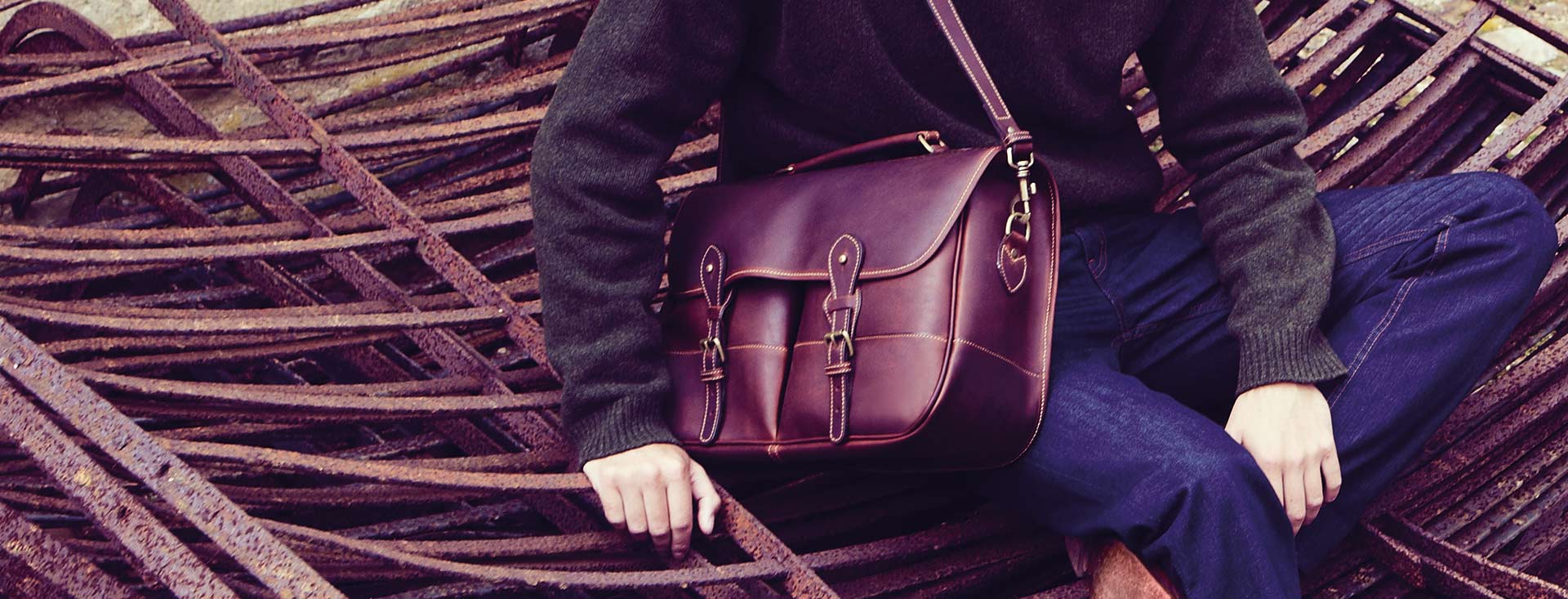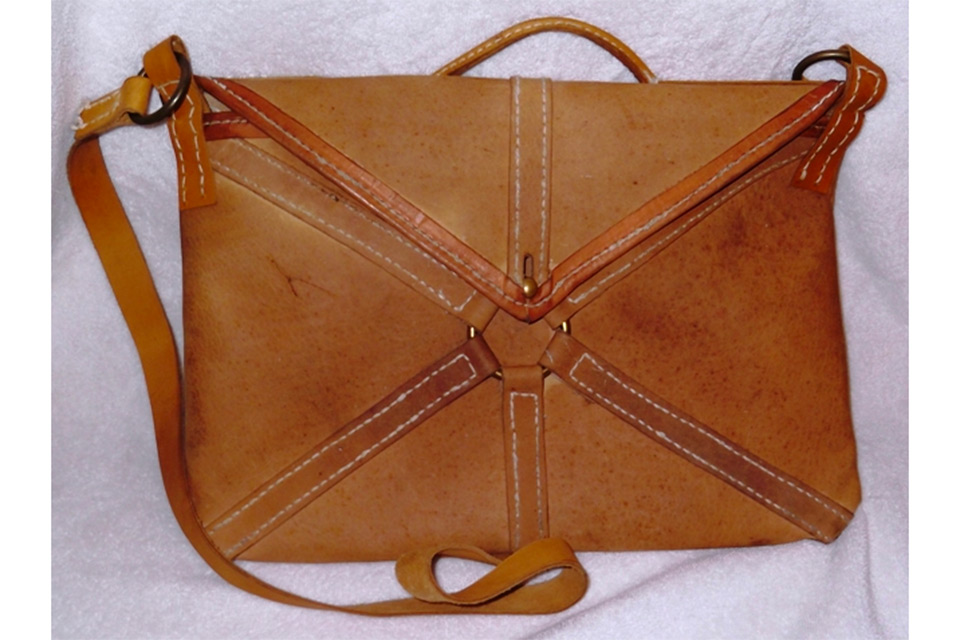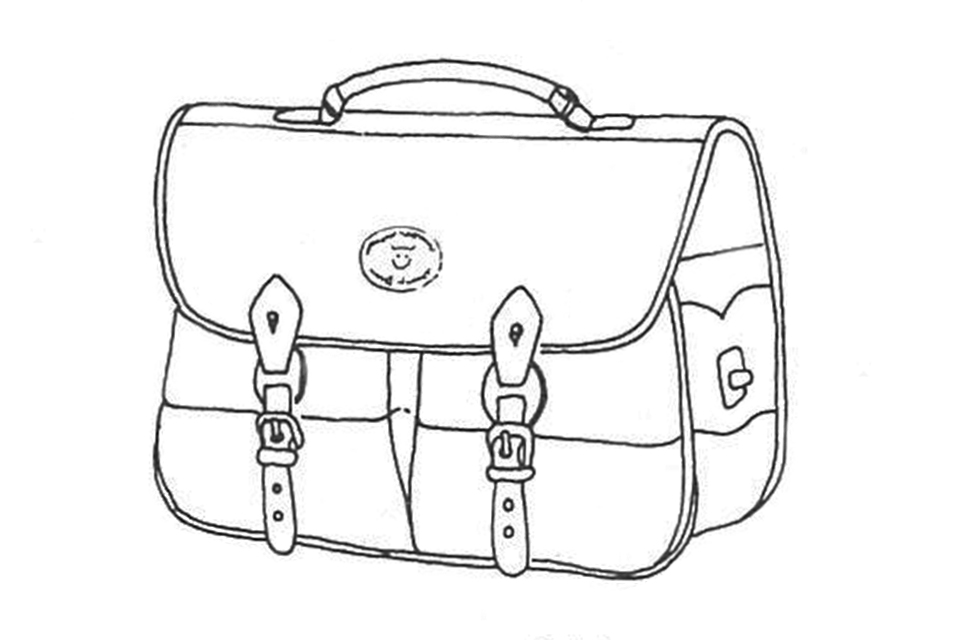At Christmas in 2012, Sally McEwan gave her artist husband, David, one of our Clipper bags in dark brown miret bridle leather, which he had made some pretty hefty hints about wanting. This photo is of David with the Clipper after his Christmas dinner…
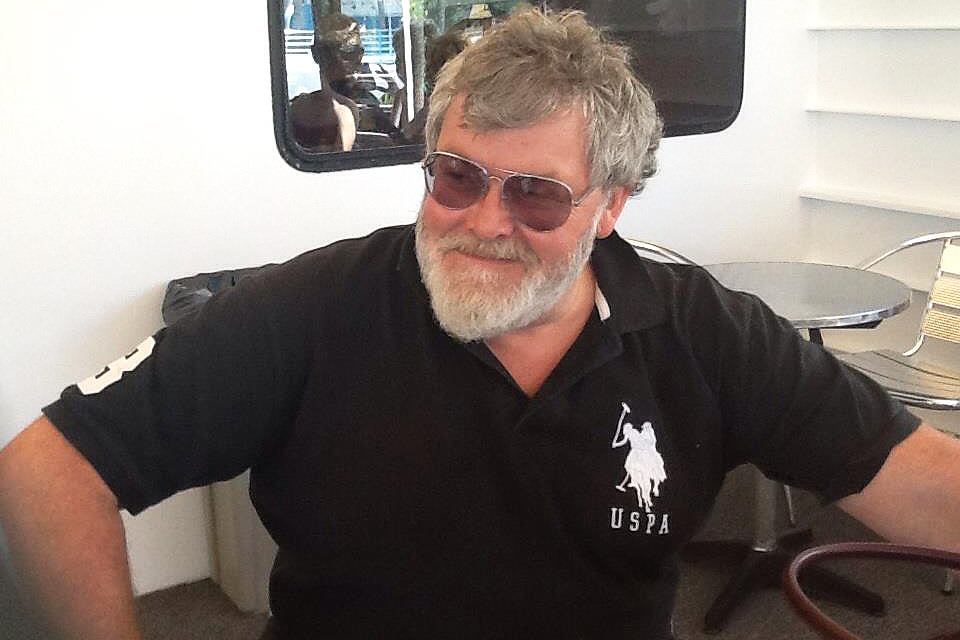
David had a pretty hefty trip ahead of him to take commissions for paintings in Florida, the Falkland Islands and even further, on to the edge of Antarctica, the island of South Georgia. David sent us some stunning photos of his Clipper, which had been christened ‘Terence’ in the various locations, so we cheekily asked him to write us a guest blog of his journey. This is what he wrote:
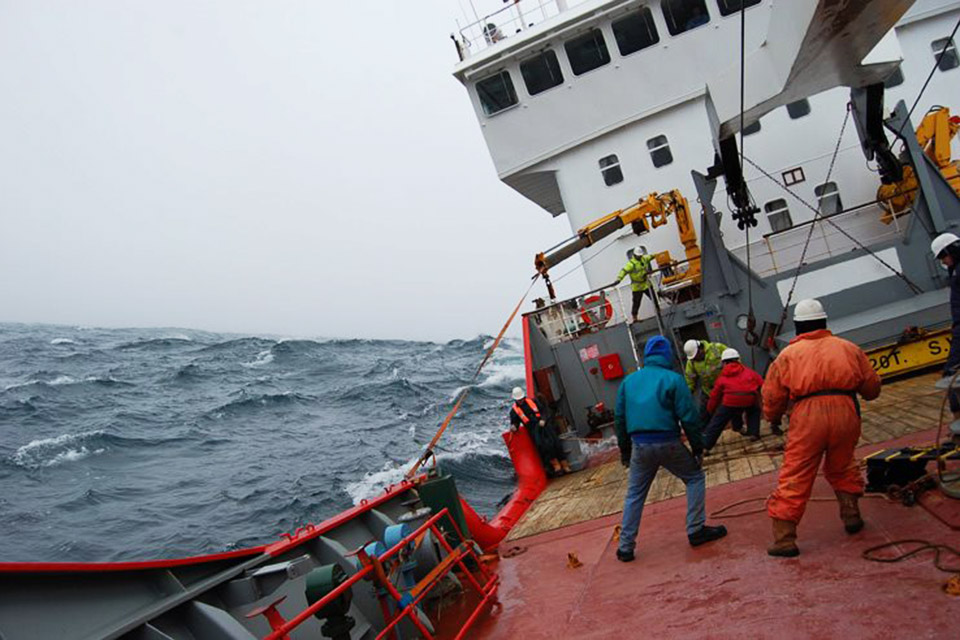
The Travels of Terence Tusting
I’m an Artist, well, no, actually I’m a painter, Artists wander around clutching their foreheads looking pale and posey waiting for their inspirational muse to strike; I just get on with the job. Getting on with the job means that wherever I am I need to be able to work at the drop of a pencil (which I do quite often, being giftedly clumsy) so I do need to carry lots of ‘stuff’ around with me… So I need a bag, more than that, I need a bag from which I can recover one of twenty types of pencil, pens, graphite sticks, brushes, sketch pads – a special bag then, with lots of painter friendly compartments.
I’d been a good boy last year, in fact, I must have been a very good boy because Father Christmas brought me a big Tusting Clipper Bag with pockets, sleeves and room for everything I could possibly need – including Kindle.

Because I was going off on a long foreign trip I practised packing and finding those things that have to be handed over at airports with sophisticated and cosmopolitan ease. Well, we’ve all been behind people who wait until they are standing at a cash point before looking through bags filled with receipts, knitting patterns, pill boxes and emergency tea bags for a card which they’d left at home anyway. As I would be travelling through several airports, sea ports and time zones, I needed to find all manner of documents quickly and considering that my family believe that I need a posse of carers to get me from my front door to the kitchen, they were worried.
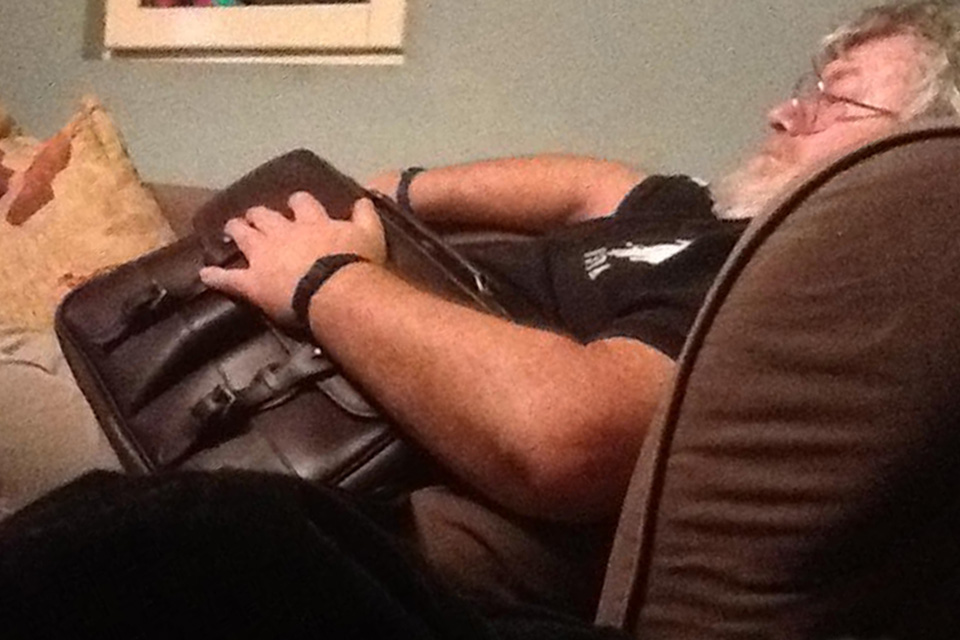
I travelled and showed to a variety of officials documents, passports and bits of plastic, and each time I dipped my hand into one of a number of pockets and compartments, they were there. It wasn’t magic, it was professional design. So Terence kept me company at Show Jumping venues, Polo Matches and gallery openings and kept safe brochures, sketches, books and business cards, sandwiches and beer, cameras and Kindles. I dropped it, I stood on it, I dragged it, I threw it and I breathed in the wonderful smell of leather (in a good way) and flew from Barcelona to Miami and back. Then on to Gatwick, and R.A.F. Brize Norton, zoomed down to The Falklands and then sailed off through wild seas beyond the Antarctic Confluence to draw and photograph South Georgia, ships and icebergs.
Throughout it all, Terence Tusting was there like a silent assistant with just the right thing at just the right time.

